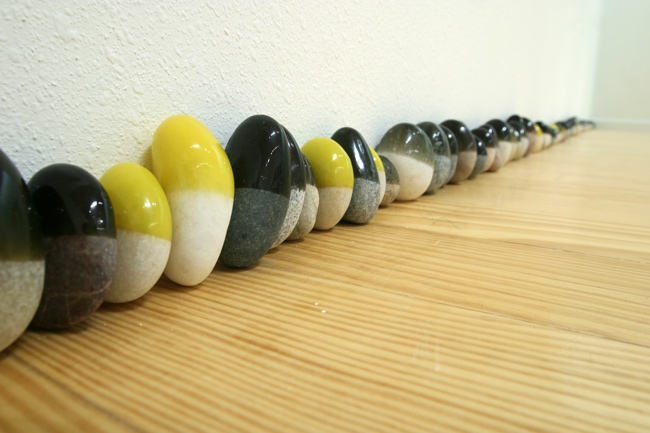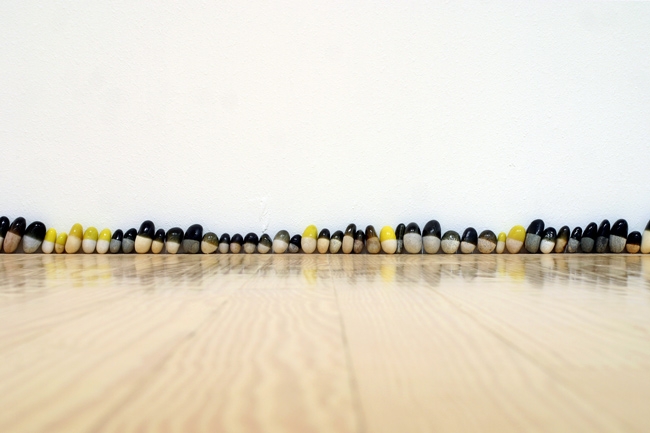… You who are passing between transient words
you provide the sword, we provide the blood
you provide the steel and fire, we provide the flesh
you provide another tank, we provide the stones
you provide the tear gas bomb, we provide the rain…
Like the poem written by Mahmoud Darwich a few months after the start of the intifada, the “war of stones†in December 1987, like a revisiting of the clash between David and Goliath, the work by Nida Sinnokrot underscores the unequal match between the Israeli army and the Palestinian population.
Some two hundred pebbles collected by the artist in various sites are lined up along the wall of the exhibition space. Their upper half is covered with yellow or black rubber. This coating is washed before each exhibition, a careful act of preparation that may recall either the ritual washing and swaddling of a body in Muslim funeral rites or the precise procedures of making those rubber-coated bullets used by the army when dealing with civilians because of their “less lethal†nature – which relative harmlessness is in fact seriously contested. The work poses this rather ironic question: would it be enough for the stones picked up from the Palestinian ground and used as projectiles to be coated with rubber for the violence of the clashes to become acceptable?
Humble in its choice of materials, and anti-monumental, Sinnokrot’s installation results from the condensation of multiple, sometimes contradictory meanings. The displacement of materials and their rather homemade transformation bring to mind the practices of Land Art (Richard Long for example) or Arte Povera, which sought to reintroduce something elementary and “anti-iconographic†into the sculptural repertoire. But then each of these Rubber-Coated Rocks is itself hybrid, an artefact, because of the addition of the rubber. Further, their arrangement suggests a familiar image, that of a queue forming at a checkpoint or a line of demonstrators. Backs to the wall, mutually supporting, these distant, anonymous forms inspire feelings of empathy.
Irène Burkel
Translated by Charles Penwarden



Follow us on: